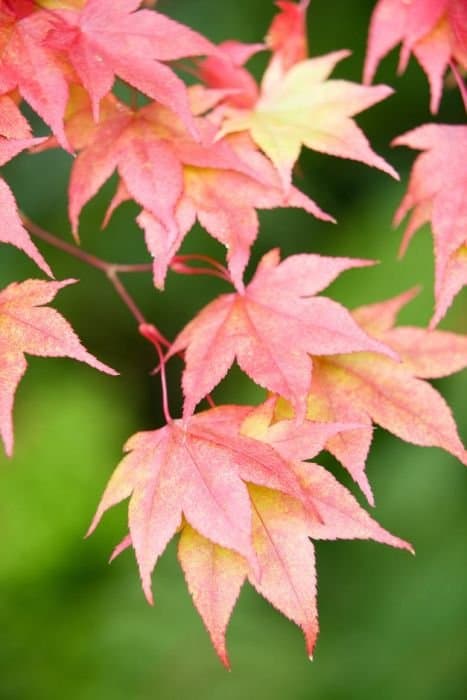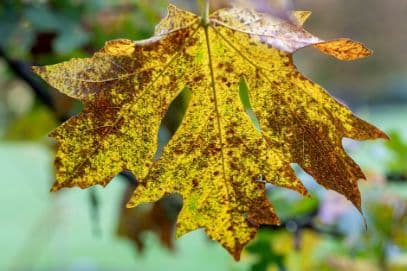Red horse chestnut 'Briotii' Aesculus × carnea 'Briotii'

ABOUT
'Briotii' is a medium-sized deciduous tree with a compact rounded crown. Leaves with 5-7 dark green leaflets. Flowers bright rosy-pink, in erect panicles to 20cm in length. Fruit with few spines
About this plant
 Names
NamesFamily
Sapindaceae
Synonyms
Red Horse Chestnut, Ruby Red Horsechestnut, Briot's Red Horse Chestnut
Common names
Aesculus × carnea 'Briotii'.
 Characteristics
CharacteristicsLife cycle
Perennials
Foliage type
Deciduous
Color of leaves
Green
Flower color
Red
Height
30 feet 9 meters (9 m)
Spread
30 feet 9 meters (9 m)
Plant type
Tree
Hardiness zones
5
Native area
Hybrid
Benefits
 General Benefits
General Benefits- Attractive Ornamental Features: The Red Horse Chestnut is known for its beautiful rose-pink flowers that provide aesthetic value to any landscape.
- Shade Provider: With its broad, dense canopy, it offers significant shade during hot summer months, making it valuable for urban and residential settings.
- Habitat for Wildlife: The tree can serve as a habitat and food source for various species of birds and insects, contributing to local biodiversity.
- Drought Tolerance: Once established, it has a degree of tolerance to dry conditions, reducing the need for frequent watering.
- Adaptability: The Red Horse Chestnut is adaptable to a wide range of soil types, though it prefers moist, well-drained soils.
- Seasonal Interest: Beyond the spring flowers, it also provides autumn interest with its foliage turning to yellow or brownish hues.
- Urban Tolerant: It can tolerate urban pollution and is therefore suited for planting in city environments and alongside streets.
- Low Maintenance: Generally, it requires minimal upkeep once established, aside from occasional pruning to maintain shape and remove dead wood.
 Medical Properties
Medical PropertiesThis plant is not used for medical purposes.
 Air-purifying Qualities
Air-purifying QualitiesThis plant is not specifically known for air purifying qualities.
 Other Uses
Other Uses- Red Horse-Chestnut wood shavings can be used as a natural dye for fabrics, imparting a warm, rich brown color to textiles.
- The tree's dense canopy provides excellent shade for moss gardens, promoting the growth of these delicate plants that thrive in cooler, shaded areas.
- Beekeepers sometimes plant Red Horse-Chestnuts nearby as they produce abundant flowers, which are attractive to honey bees for early season foraging.
- The tree's rot-resistant wood can be used for creating outdoor sculptures, ornaments, or even as material for smoking meats, imparting a unique flavor.
- Fallen dried leaves and the spiky seed casings can be collected and used in creating natural artwork or for educational nature activities with children.
- Red Horse-Chestnut flowers can be used to make a natural blush or eyeshadow by drying and crushing the petals to create a powder pigment.
- Due to its large, sturdy branches, the tree is often used as a natural framework for supporting climbing plants or hanging garden ornaments.
- The seeds, while not edible, can be varnished and used as counters in board games or for craft projects like making necklaces or ornaments.
- The dense wood can be carved into durable kitchen utensils such as spoons, spatulas, or even cutting boards.
- The tree can act as a natural sound barrier when planted as a hedge along busy streets, reducing noise pollution for nearby homes.
Interesting Facts
 Feng Shui
Feng ShuiThe Red Horse Chestnut is not used in Feng Shui practice.
 Zodiac Sign Compitability
Zodiac Sign CompitabilityThe Red Horse Chestnut is not used in astrology practice.
 Plant Symbolism
Plant Symbolism- Strength and Stability: The Aesculus × carnea 'Briotii', commonly known as the Red Horse Chestnut, develops a strong and sturdy trunk, symbolizing the qualities of strength and resilience in the face of life's challenges.
- Prosperity: Historically, nuts from chestnut trees have been associated with abundance and prosperity, possibly due to their once-crucial role as a food source.
- Wisdom: Trees, in general, have often been seen as ancient symbols of wisdom. The Red Horse Chestnut, with its stature and longevity, may be related to this deep knowledge and insight.
- Continuity: As a tree that endures through each season, the Red Horse Chestnut can symbolize continuity and the cyclical nature of life.
- Feminine Energy: The flowers of the Red Horse Chestnut are showy and delicate, which can be seen as a representation of the grace and nurturing aspects of feminine energy.
 Water
WaterThe Red Horse Chestnut should be watered deeply, ensuring that water reaches deep into the root zone. It's important to water the plant once a week with about 1-2 gallons of water during its growing season in spring and summer. During the fall and less so in winter, reduce the frequency to every two to three weeks, as the plant requires less water when it's not actively growing. Keep the soil consistently moist but not waterlogged. Overwatering can be as harmful as under-watering, so monitor the soil moisture level, especially during dry spells.
 Light
LightThe Red Horse Chestnut thrives in full sun to partial shade. The ideal location for this plant would be a spot where it receives at least four to six hours of direct sunlight daily, with some shade during the hottest part of the day. Avoid planting it in deep shade, as this can reduce flowering and the tree's overall vigor.
 Temperature
TemperatureThe Red Horse Chestnut is hardy and can tolerate a range of temperatures, but it performs best in areas where the temperature is between 50°F and 80°F. It can survive winter temperatures down to about -20°F, but temperatures above 90°F can stress the plant. Ensure it has adequate moisture during extreme heat.
 Pruning
PruningPruning the Red Horse Chestnut is essential to remove any damaged or diseased branches and to maintain its shape. Prune in the late winter or early spring before the new growth starts. This timing allows the plant to heal quickly without risking new shoots being damaged by frost. Periodically thin out the canopy to allow light and air to reach the inner branches, promoting overall plant health. Pruning should be done every couple of years or as required.
 Cleaning
CleaningAs needed
 Soil
SoilRed Horse Chestnut thrives in moist, well-drained soil with a mix of loam, organic matter, and sand with a pH range of 6.0 to 7.5 for optimal growth.
 Repotting
RepottingRed Horse Chestnut trees, being large and usually planted outdoors, do not require repotting as they are not typically grown in containers.
 Humidity & Misting
Humidity & MistingRed Horse Chestnut is adaptable to a range of humidity levels and does not have specific humidity requirements, thriving in outdoor ambient conditions.
 Suitable locations
Suitable locationsIndoor
Not suitable for indoor growth due to its large size.
Outdoor
Plant in full sun to partial shade with ample space for growth.
Hardiness zone
4-8 USDA
 Life cycle
Life cycleThe Red Horse Chestnut (Aesculus × carnea 'Briotii') begins its life when a fertilized seed germinates, typically when temperature and moisture conditions are favorable in the spring. The seedling emerges from the soil and develops into a juvenile plant with characteristic compound leaves. As it matures, the tree undergoes a period of vegetative growth, where it increases in size and height through the production of new leaves and branches. Once the tree reaches reproductive maturity, which can take several years, it produces showy, red flower clusters usually in late spring. After pollination, often by bees, the flowers develop into spiny fruits containing seeds, which when mature, drop to the ground to potentially start a new life cycle. The tree then enters a period of dormancy during colder months, dropping its leaves in the fall and conserving energy until the next growing season.
 Propogation
PropogationPropogation time
Spring-Early Summer
The most popular method of propagating the Red Horse Chestnut, Aesculus × carnea 'Briotii', is through seed germination. The process begins in the fall after the seeds have ripened and been collected. These seeds have a hard outer coating which requires stratification to break dormancy; this is typically achieved by subjecting the seeds to cold conditions for a period of 3-4 months. Sowing the seeds should be done in deep containers as the species develops a long taproot. The seeds are planted at a depth equal to their size and kept in a cold frame or unheated greenhouse during the winter. Once the temperatures rise in the spring, germination will take place. It is crucial to keep the soil consistently moist throughout but not waterlogged, and to protect the young seedlings from frost during their first growing season.








